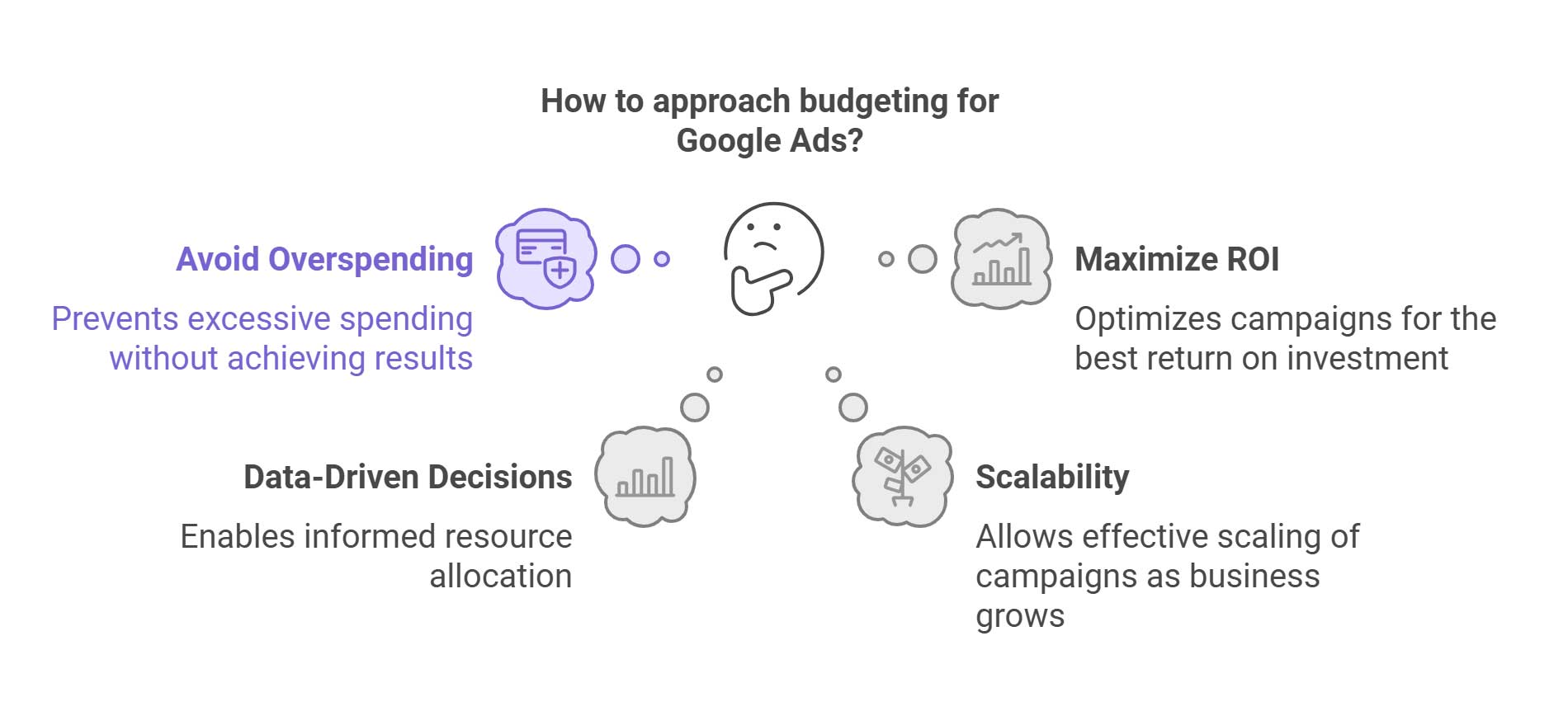Google Ads remains a powerful tool for businesses looking to reach potential customers online. However, the ever-evolving digital landscape makes determining the right budget a complex challenge. As we look towards 2025, several factors will influence what constitutes a “good” monthly Google Ads budget. This article will delve into these factors, provide guidance, and help you establish a realistic and effective spending plan for your campaigns.
Why Budgeting is Crucial for Google Ads Success

Before we dive into numbers, it’s vital to understand why budgeting is so important:
-
Avoid Overspending: A clear budget prevents you from blowing through your marketing funds without achieving desired results.
-
Maximize ROI: With a well-defined budget, you can optimize your campaigns to get the best return on your investment.
-
Data-Driven Decisions: A budget allows you to track performance and make informed decisions about where to allocate resources.
-
Scalability: A solid budget strategy enables you to scale your campaigns effectively as your business grows.
Factors Influencing Your Google Ads Budget in 2025
Several factors will play a crucial role in determining your ideal budget in 2025. These include:
-
Industry Competition: Highly competitive industries with a large number of advertisers will naturally require a larger budget to gain visibility and clicks.
-
Keyword Volume and Cost: Popular, high-volume keywords typically come with a higher cost per click (CPC). Niche keywords may be cheaper but generate less traffic.
-
Campaign Goals: Are you aiming for brand awareness, lead generation, or direct sales? Each goal may require a different budgeting approach.
-
Target Audience: Reaching a niche audience might require a more targeted (and possibly higher) bid strategy than a broad audience.
-
Geographic Location: Advertising in a larger metropolitan area with higher competition often means higher CPCs.
-
Campaign Structure: The complexity of your campaigns, such as the number of ad groups, keywords, and ad variations, can affect your overall spend.
-
Landing Page Quality: Poor landing pages can result in low conversion rates, making your Google Ads budget less effective. Focusing on a good experience can increase conversions and decrease your spend.
-
Emerging Trends: AI-powered features, new ad formats, and changes in user behavior in 2025 could influence campaign costs. Be ready to adapt.
-
Growth Stage: If your company is in a startup phase you will need to test out different budgets and strategies to find what works for your business.
-
Your Overall Marketing Budget: Google Ads should fit into your wider marketing plan, complementing other channels.
How Much Should You Spend? Practical Guidelines
It’s impossible to provide a single magic number that works for everyone. However, here are some practical guidelines:
-
The Starter Budget: For small businesses or those new to Google Ads, a starting monthly budget of $500 to $1,000 could be a good place to test the waters. This allows you to experiment with different keywords and ad copy, collect valuable data, and identify what performs best.
-
The Mid-Range Budget: If you are already familiar with Google Ads or are a medium-sized business, a monthly budget between $1,000 and $5,000 might be more appropriate. This allows for a broader reach, more experimentation, and more data to help you dial in your campaigns.
-
The Advanced Budget: Large businesses or those with very competitive target markets should expect to spend $5,000+ per month. This higher budget will facilitate more aggressive bidding strategies, broader keyword targeting, and more advanced marketing tactics.
-
Percentage of Revenue: A common method is to allocate 5-15% of your revenue towards your marketing budget. From there you can decide what percentage of your marketing budget you want to dedicate to Google Ads.
-
Consider Your Customer Lifetime Value (CLTV): How much is a new customer worth? Knowing your CLTV can help you make a well-informed decision on how much to invest in acquiring them via Google Ads.
Key Strategies for Effective Budgeting
-
Start Small and Scale: Don’t commit to a large budget right away. Begin with a smaller amount, collect data, and scale your spending gradually as you optimize your campaigns.
-
Track Your Performance Closely: Use Google Ads reporting tools to monitor your key performance indicators (KPIs), such as clicks, impressions, conversions, and cost per acquisition (CPA).
-
Optimize for Conversions: Don’t focus solely on clicks. Optimize your campaigns to generate leads, sales, or whatever your desired outcome is.
-
Refine Your Keywords: Continuously refine your keyword list. Eliminate underperforming keywords and add new ones based on search data.
-
Use A/B Testing: Test different ad copies, landing pages, and bidding strategies to maximize your results.
-
Be Patient: Google Ads takes time to show results. Don’t expect overnight success. Allow sufficient time to gather data and optimize your campaigns.
-
Don’t Be Afraid to Pivot: If something isn’t working, don’t be afraid to adjust your strategy. Google Ads requires constant learning and adaptation.
Future Considerations in 2025
-
Increased Automation: Google Ads is becoming more automated, making it easier for businesses to optimize their campaigns. AI-powered features might also impact budget management.
-
Privacy Changes: Increased emphasis on data privacy could affect how you target your audience.
-
New Platforms and Formats: As new platforms and ad formats emerge, you might need to adapt your Google Ads strategy and budget accordingly.
Conclusion
Determining a “good” monthly Google Ads budget for 2025 depends on various factors specific to your business. While there’s no one-size-fits-all solution, the guidelines in this article will set you on the right path. By understanding your goals, tracking your performance, and continuously optimizing your campaigns, you can make the most of your Google Ads investment. Remember, consistency and data-driven decision-making are key to achieving long-term success with Google Ads.







